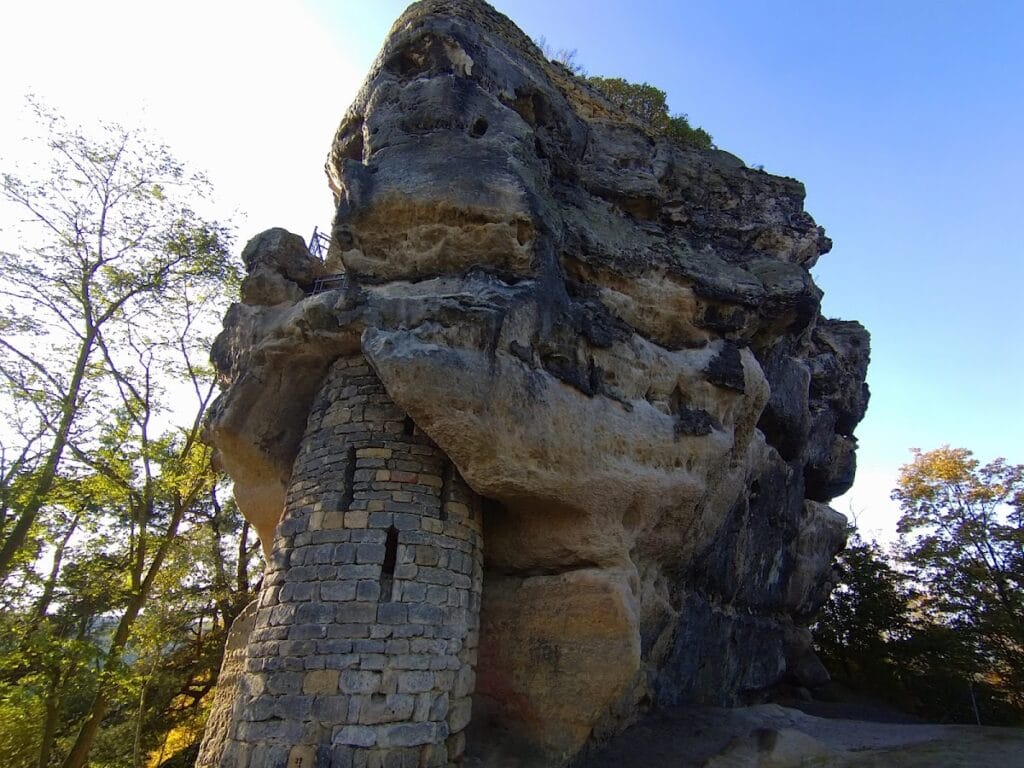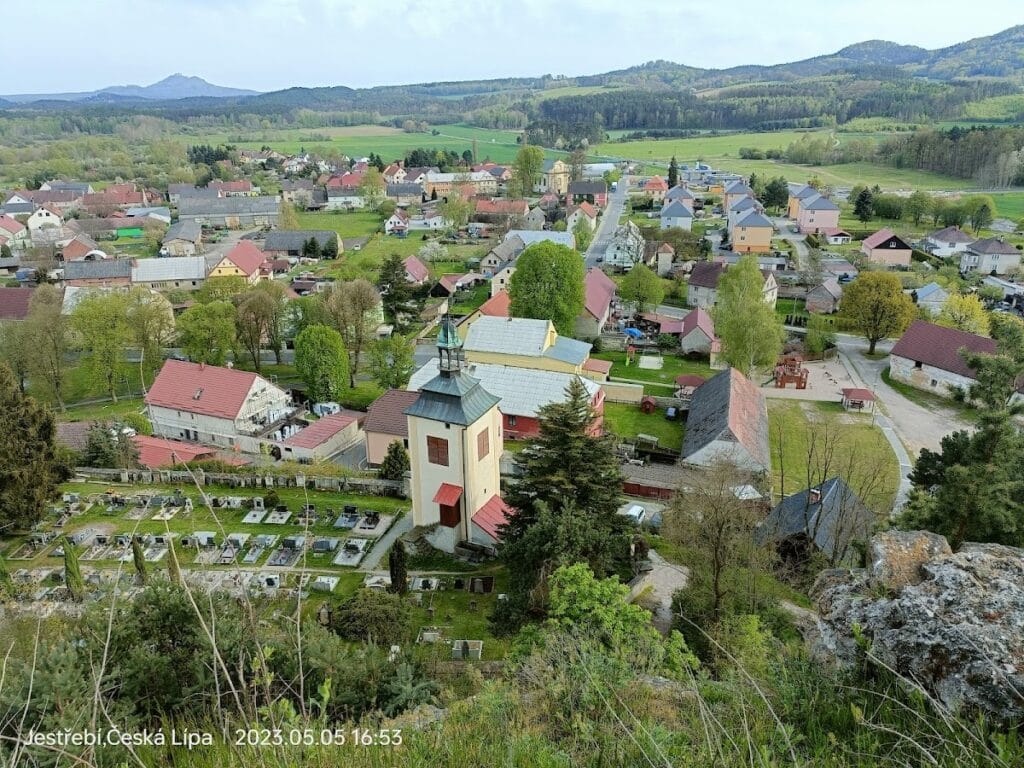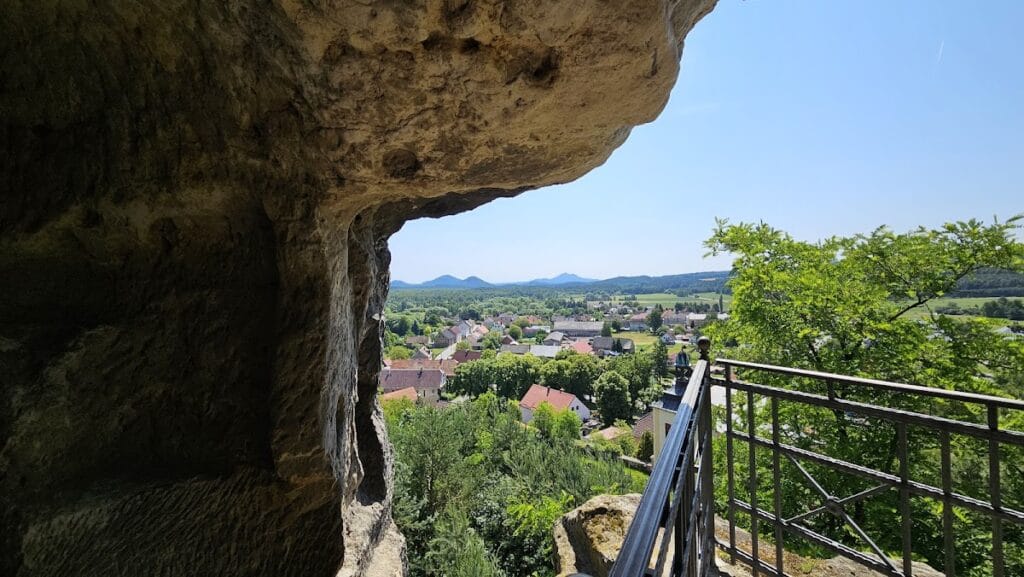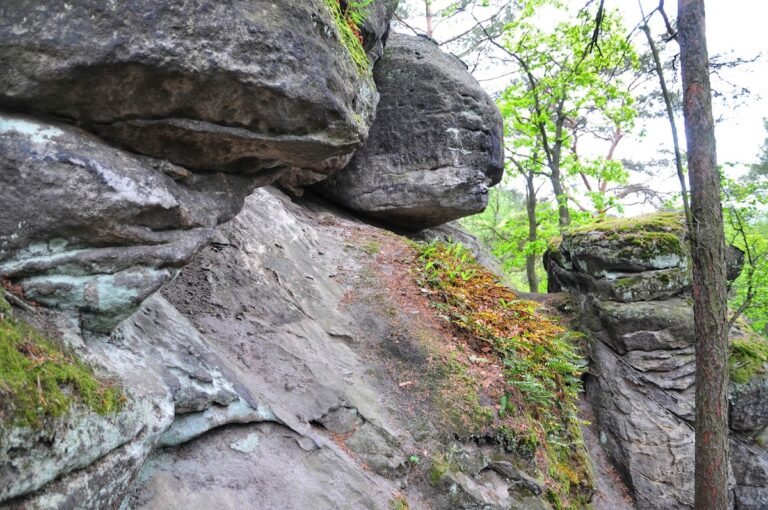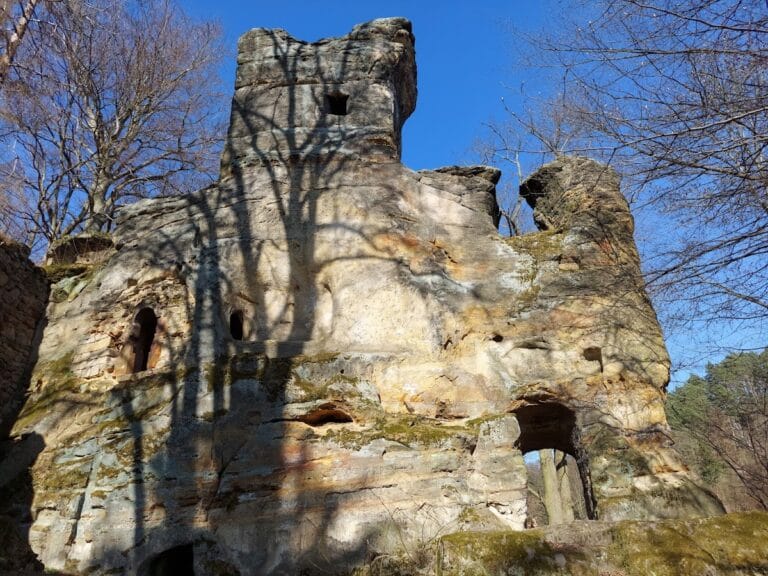Castle Jestřebí: A Historic Rock Castle in the Czech Republic
Visitor Information
Google Rating: 4.7
Popularity: Medium
Google Maps: View on Google Maps
Official Website: www.jestrebi.eu
Country: Czechia
Civilization: Medieval European
Remains: Military
History
Castle Jestřebí is located in the municipality of Jestřebí in the Czech Republic. It was established around the year 1400 by the noble family Berky of Dubá, who had controlled the surrounding lands since at least the late 13th century. The castle played a role within a network of regional power held by the Berky, as well as the Vartenberk and Smiřický families.
During the Hussite Wars, which erupted in the early 15th century over religious and political disputes in Bohemia, Castle Jestřebí came under the control of the Hussites in 1426. It was entrusted to Jindřich Hlaváč of Dubá, a commander aligned with their cause. After the wars concluded, the castle once again fell into the hands of the Dubá family, specifically Čeněk of Dubá. He used the fortress as a base to conduct raids into the neighboring Lusatia region, actions which invited retaliatory military expeditions against the area.
Fearing destruction from these conflicts, Čeněk decided to sell the castle to Jan Smiřický. The Smiřický family retained ownership for approximately forty years, maintaining the estate during a relatively stable period. In 1491, ownership passed to Kryštof of the Vartenberk family, who added Castle Jestřebí to his adjacent holdings. However, by the mid-16th century, records indicate that the castle was no longer occupied and had fallen into ruin.
In the centuries that followed, particularly throughout the 18th and 19th centuries, local villagers systematically dismantled parts of the castle’s masonry to repurpose the stone for other uses. Natural forces also contributed to the degradation of the site through repeated rockfalls. Since 1958, Castle Jestřebí’s ruins have been legally protected as a cultural monument in the Czech Republic. Despite this status, ongoing threats from natural rock instability, as well as human interventions such as nearby sandstone quarrying and the growth of invasive plants, have continued to challenge the preservation of the site. A significant collapse occurred in 2009, prompting temporary closure and subsequent discussions about safety measures, including protective barriers approved in 2012.
Remains
Castle Jestřebí is classified as a rock castle, built atop a sandstone outcrop that stands about 259 meters above sea level overlooking the village of Jestřebí. The formation of the rock originally resembled the hull of a stranded ship, which influenced how the fortress was constructed. Rather than featuring traditional castle walls, much of the defensive structure was carved directly into the sandstone itself. The summit of the rock was fortified with battlements hewn from the stone, integrating the natural landscape into the castle’s protective design.
One of the most notable remaining features is a rock-cut chamber that housed a treadwheel well mechanism. This type of well used a large wheel operated by human power to draw water from below the rock. Remnants of this mechanism are still visible on the outside of the chamber. In the 19th century, a spiral staircase was installed inside the well shaft, repurposed to assist visitor access to the elevated parts of the ruin.
Access to the castle today requires ascending 77 steps and climbing approximately 60 vertical meters from the village below. The southern, lower section of the rock is open to the public, while the northern, higher portion remains closed for safety reasons. Over the centuries, the sandstone rock on which the castle stands has experienced numerous collapses—in 1813, 1825, 1852, 1868, 1922, 1936, and during the 1980s—each event altering the original shape of the rock and destroying parts of the remaining structure.
From the site, there are panoramic views capturing the surrounding villages, mountain ranges, and nearby ponds. A marked hiking trail connects the castle ruins with the town of Česká Lípa, highlighting its role as a landmark within the landscape.

